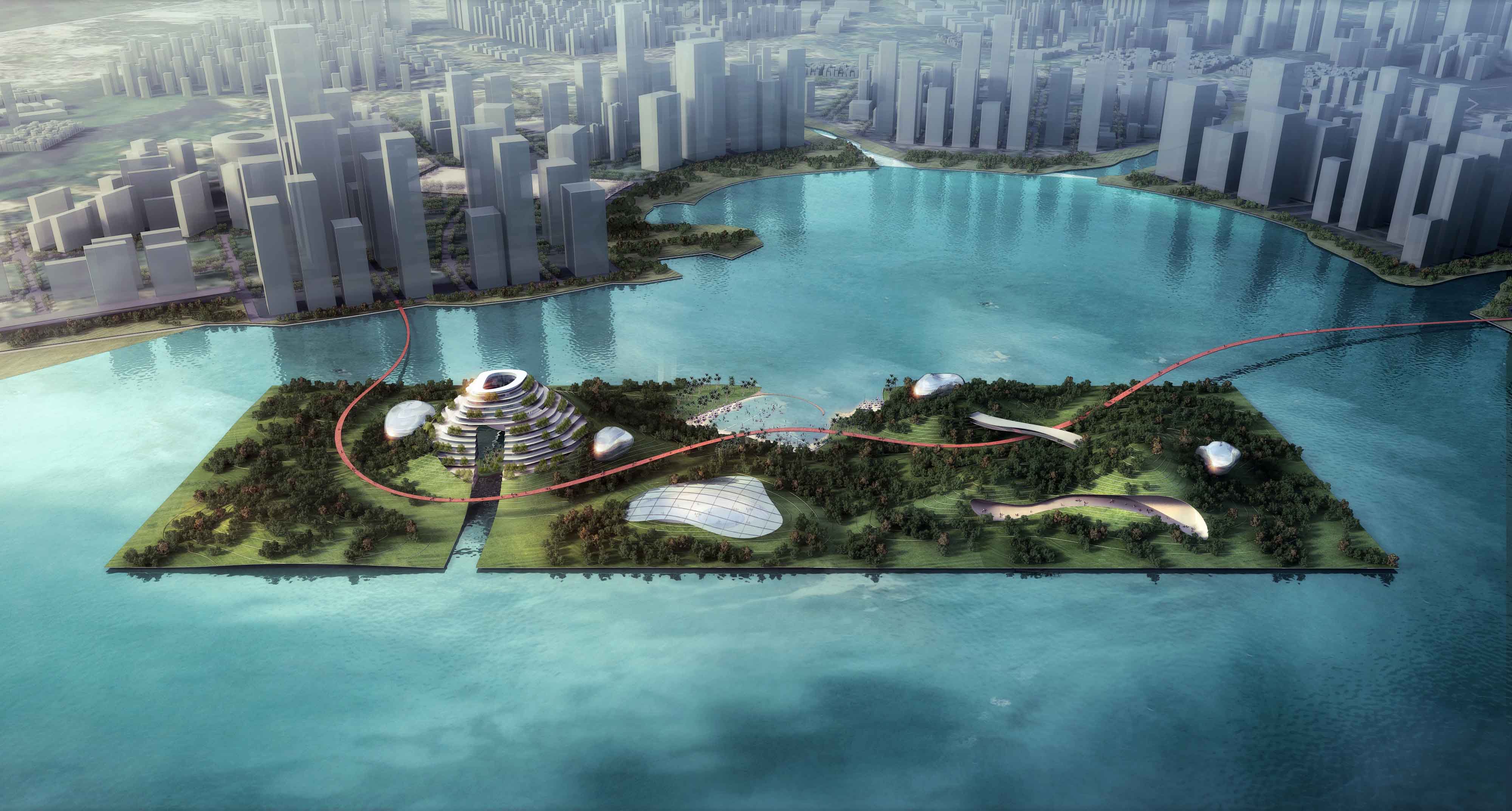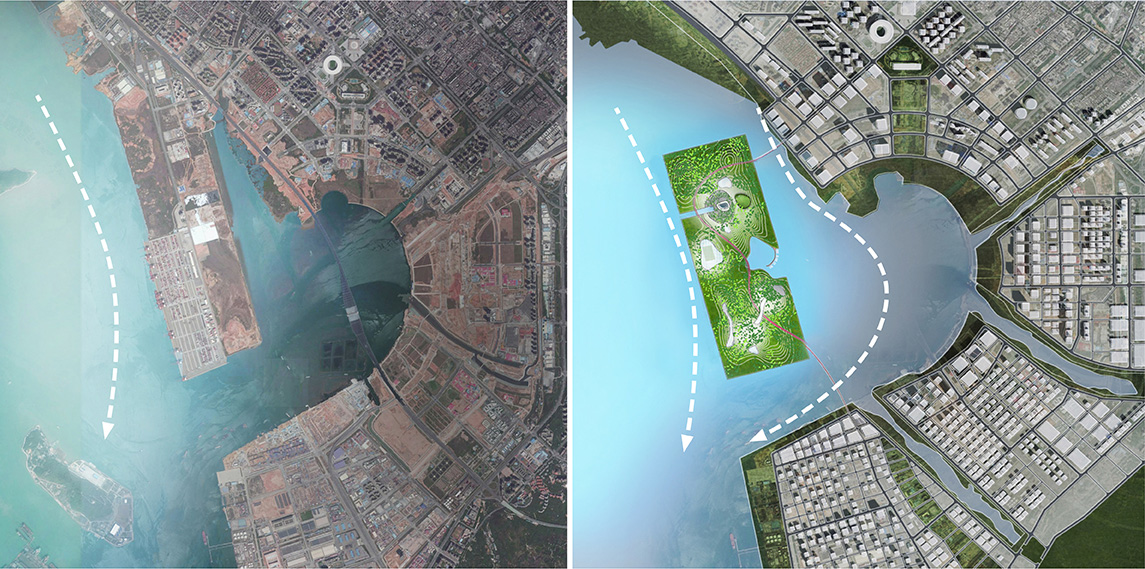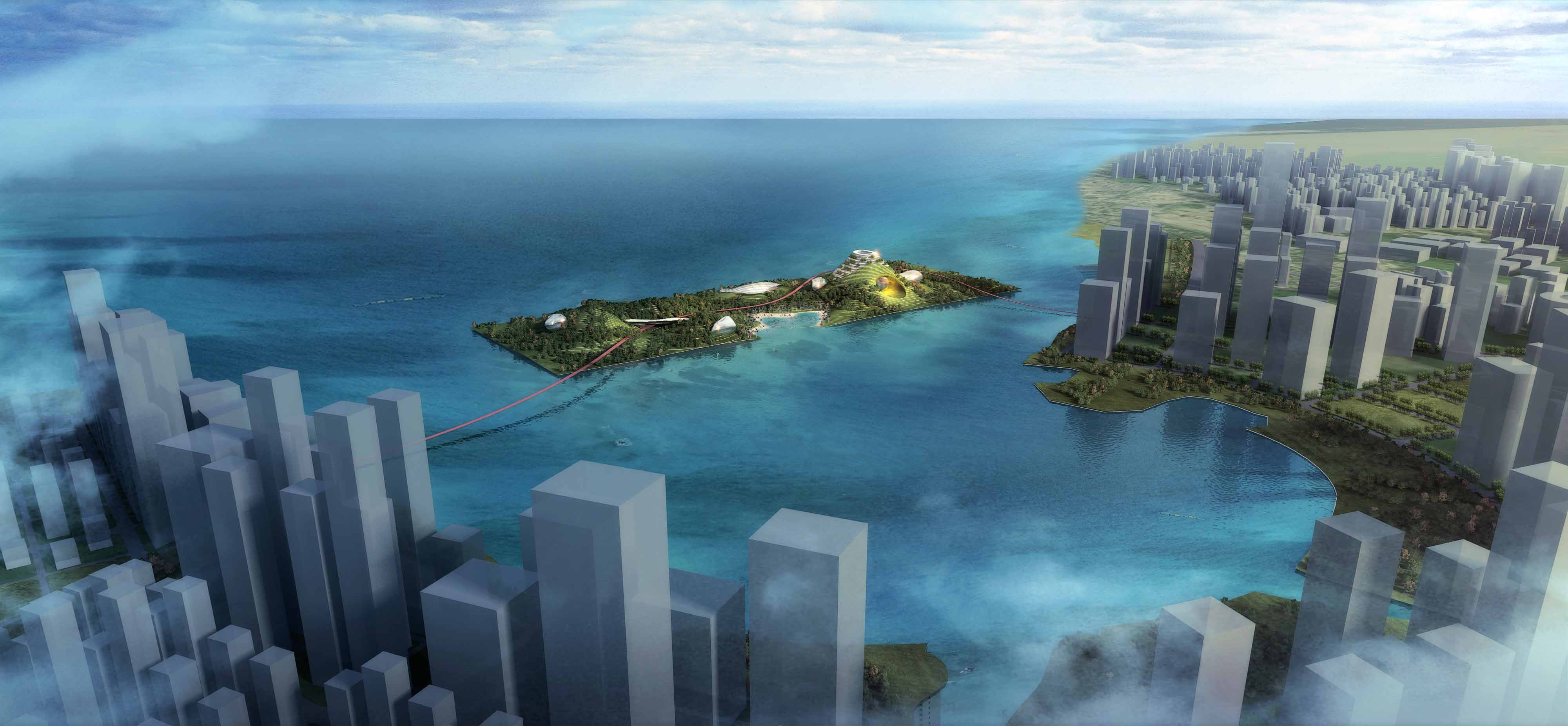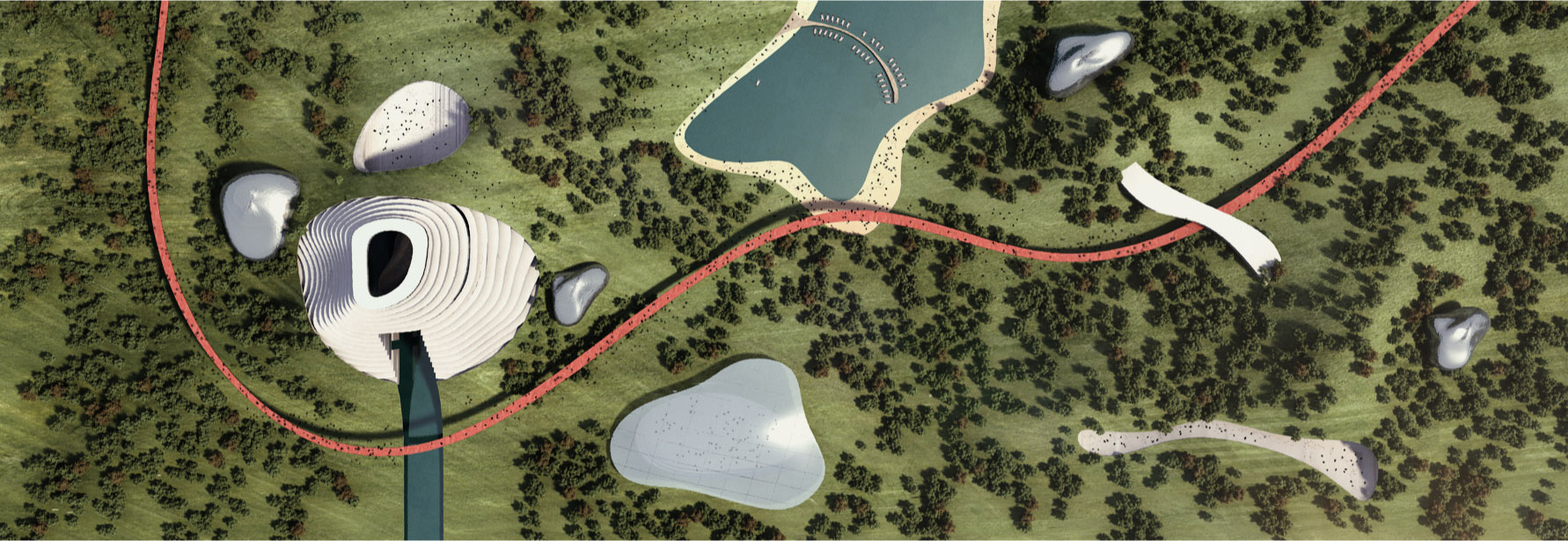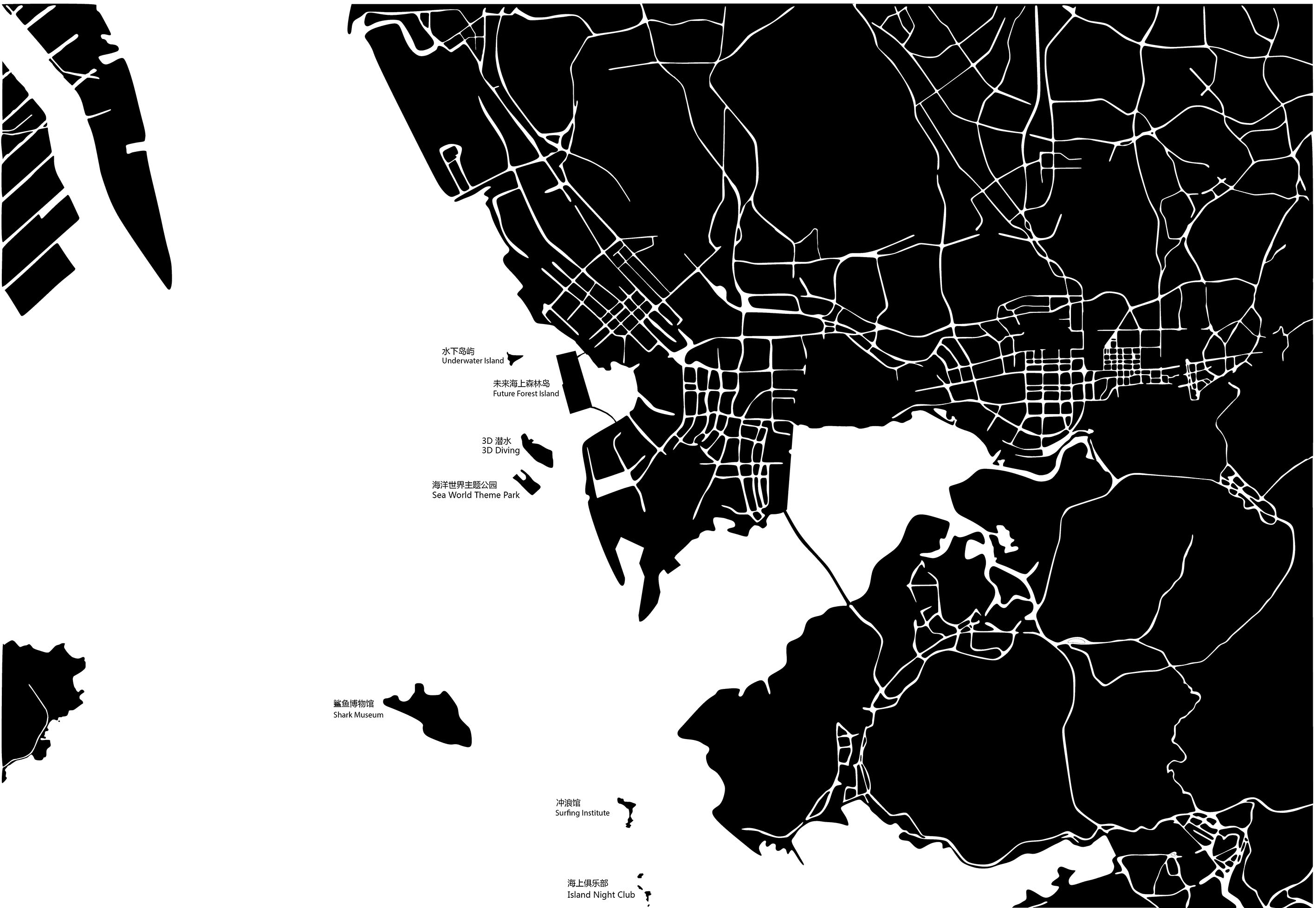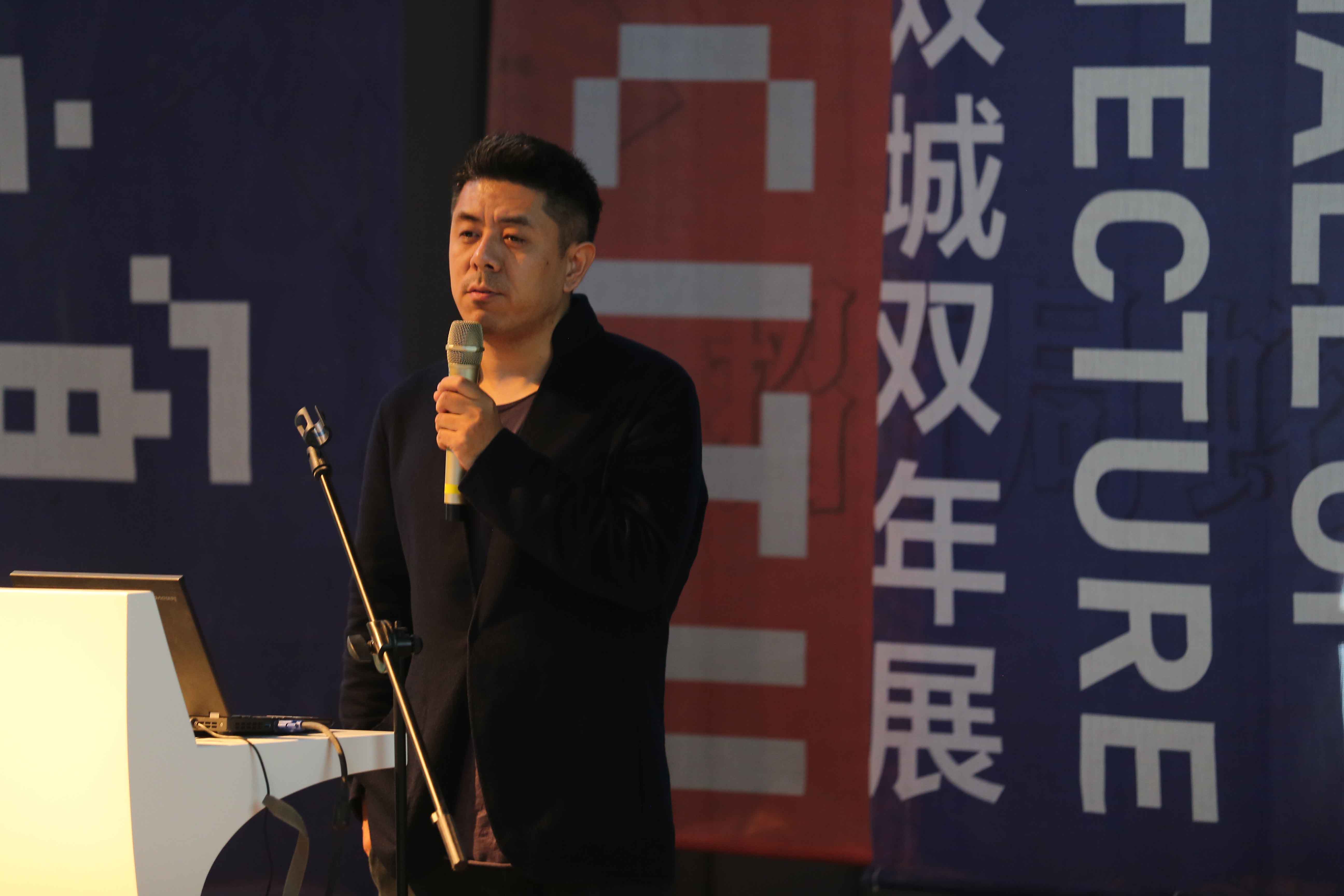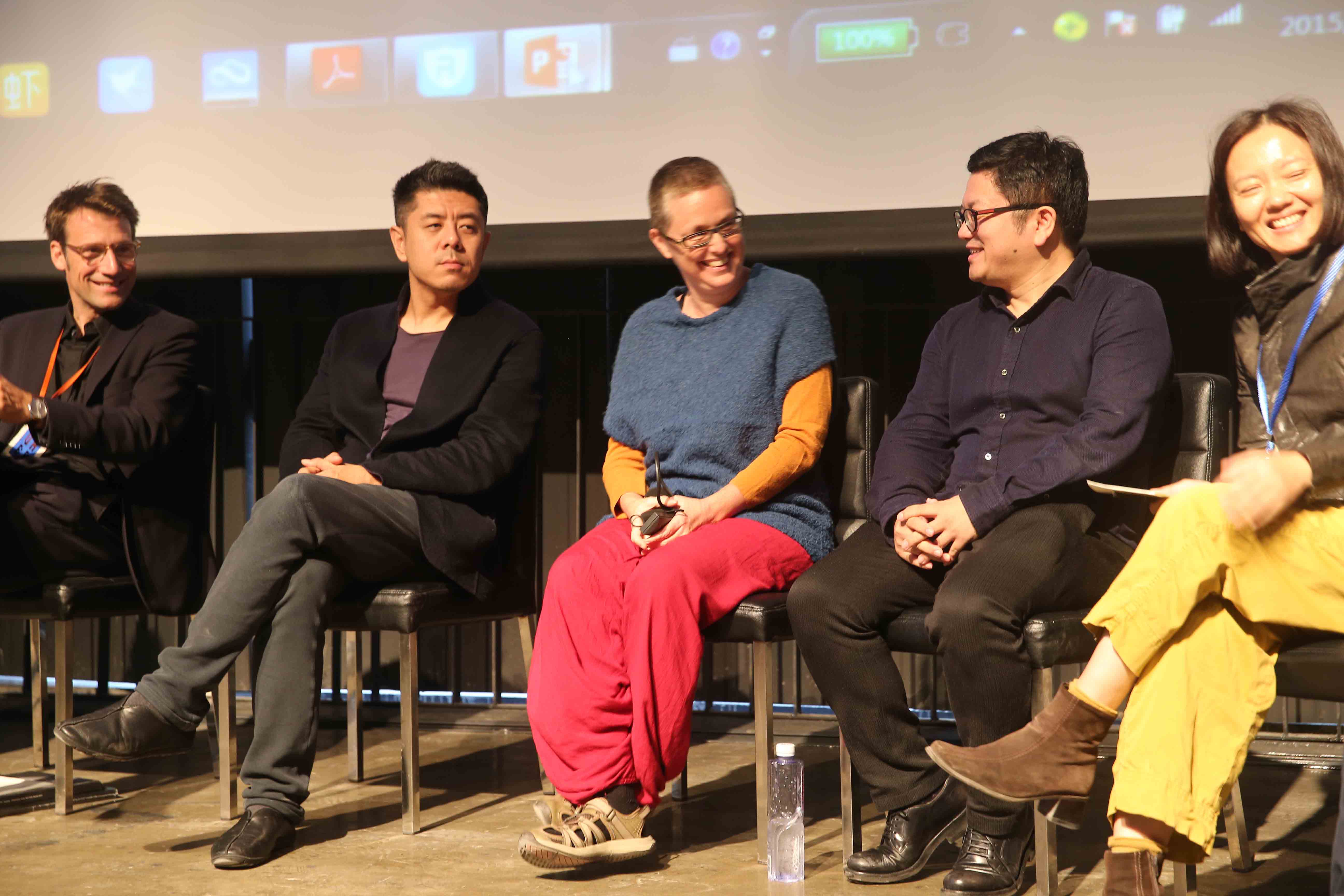Existing Reality
Once a forgotten landscape, the centralized location of Qianhai Bay meant access to Shenzhen, Hong Kong, and Guangzhou. The geographic convince of Qianhai Bay foreshad-owed the land’s inevitable reclamation and development. The quintessential post-modern method to achieve economic development with high-density master planning lead to yet another replicated Manhattan. The generic metropolis maximizes every marketable inch; the resulting urban landscape is comprised of redundant high-rises representing capital and power. To escape the rapid oppression of greed-initiated density and extruded vertical boxes, Qianhai Bay provides an alternative topography on which to build a future city with new values.
By conceptually extending the city in the ocean, the modern city can be alleviated from the typical urban dilemmas such as increasing population, reductive living space, lacking land, chaotic infrastructure and inefficient transportation system. Kenzo Tange’s 1960 proposal for Tokyo Bay was a post-war, reactionary attempt to reconcile these corrosive urban is-sues. Lauded for its utopian vision, Tange’s proposal combined the rationality of a city grid with the flexibility of an ocean linear to develop a new urban typology. Despite the liberat-ed city plan, Tange’s pragmatic and idealistic vision remained closely ensnared with indus-trial technology.
Realistic Dreams
The speed and scale at which land reclamation developed in the 1990s in the neighboring Shenzhen Bay led to drastic environmental impacts including reduced tidal volume, weak water power, and a rapid acceleration rate of natural deposition that was too expeditive for any self-healing ability. Shenzhen Bay’s ensuing developmental issues also resonate in the adjacent Qianhai Bay, where poor water circulation adds another layer of complexity to the current urban condition.
MAD proposes Future Forest Island—a vision to confront a future reality. Located off shore in Qianhai Bay, the Island floats in contrast to the brimming metropolis—a naturally artificial landscape, much like Central Park embedded within Manhattan. To help counter-balance the city’s rapid development, Future Forest Island strategically considers the im-pact of reclaimed land and notions of public access.
Breaking away from the mainland mass, the Island is encompassed by water on all four sides to promote improved water circulation and an environmentally healthier bay. The Island will also maintain a one-way road to minimize infrastructural and automotive con-gestion, giving preference to pedestrian activity. The pedestrian paths immerse visitors into an artificial world where natural elements—mountain, ocean, wind, rain—coalescence outside the city. As the pedestrian path carves across the Island, it connects the various public art spaces—a conceptual and cultural circulation that stands in opposition to the rational city grid.
Exhibition Information:
MAD Future Forest Island
2015 UABB PRD2.0
Exhibition Time:12/04/2015—02/28/2016
Address:2F, Former Dacheng Flour Factory & 8# Warehouse (At the intersection of Shekou Harbor Avenue and Pine Lake Road)
